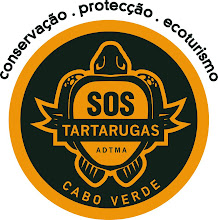The most amazing result has been the absence of turtle carapaces this year. Very few have been killed compared to previous years and there is a stunning difference between protected and non-protected beaches.
Total turtle emergences 810
Emergences on protected beaches 702
Emergences non-protected beaches 96
Emergences per day 10.5
Most emergences protected beach (Cotton Bay) 119 activities / 28 nests /5 dead
Most emergences non-protected beach (Mont Leao) 40 activities / 7 nests / 12 dead
Total nests 201
Nests on protected beaches 186
Nests on non protected beaches 15
Nests in situ 91
Nests trans situ (moved to a better place on beach) 29
Nests relocated to hatchery 66
Average eggs in hatchery nests 88.4
Average incubation time in hatchery 62
Hatching success rate 67%
Total dead turtles 34
Dead on protected beaches 19
Ratio of emergences of turtles to number killed on protected beaches 1 in 46
Dead on non protected beaches 15
Ratio of emergences of turtles to number killed on non protected beaches 1 in 6
Turtles saved by Rangers (found before being killed) 18
Sunday, August 24, 2008
Friday, August 15, 2008
Babies at last!

The first baby was born today - from Nest 1 in the hatchery. This nest was found by Betania and Hattie on Algodoeiro beach and the whole team were present when in became the first nest moved by SOS Tartarugas into the hatchery. The incubation time was 64 days and 89 babies were born from 104 eggs. A pretty good 86% success rate. Have a feeling a lot more will be hatching over the next few days.
Saturday, August 9, 2008
Environmental Fair
Rita and Jacquie went to the first ever Environmental Fair in Praia this week. The fair was opened by the Prime Minister and the Minister for the Environment, both of whom we had the chance to chat to about our project. In a speech about how important the protection of the environment was, the only subject to get a round of applause was when the PM talked about turtles being a critical part of the country's attraction and heritage. One of the best things was seeing some beautiful handicrafts from other islands (many using recycled products) and several inventive ways to make things from plastic bottles and bags. As it is rare to find Capeverdian handicrafts in Sal we hope to be able to sell some of these items here in the future.
Points of view
Had a conversation with a very well educated and spoken Capeverdian yesterday. She told me that she wanted to always have turtles in this country and the work that we are doing to protect them is excellent, but also believes that she has a right to eat turtle because she likes it and it is 'our food'.
Tuesday, August 5, 2008
The grim reality
In this line of work you get a great sense of satisfaction but there are also truly disturbing moments. Two of our Rangers were moments too late to save a 90cm loggerhead female. During their patrol they found the tell-tale track indicating a turtle had been flipped on her back and dragged away. As they had passed that same spot recently they knew the killers couldn't have gone far and ran towards Santa Maria. They obviously disturbed the criminals as they had run away leaving their blood spattered knive and the bucket that they would have used to carry turtle meat. The turtle was still alive but her flippers had been removed, a slice had been made down the centre of her plastron and her innards were falling out where a cut had been made underneath the plastron. The poor creature was obviously in a state of great distress and clearly there was nothing anyone could do for her. Fortunately the Rangers were able to contact the vet who could inject her with anaesthetic and after ten minutes she died. This is in a place promoted to tourists as having tranquil, white sand beaches. My big question is and will always be, 'Why, if you have to kill a turtle, must you do it in such an inhumane way?' Would a quick cut to the throat really not be possible? We are a bunch of concerned people but it will take more than this. It will never stop until the government get serious about stopping it.
Subscribe to:
Posts (Atom)




